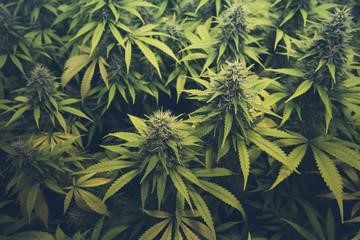
Cannabis needs a little introduction. The herb has been part of folk medicine from time immemorial due to its powerful healing properties.
Archaeological findings excavated a few years ago suggest evidence of human marijuana usage from at least 2,500 years ago. Various extracts from the plant have proven effective at remedying numerous medical conditions, including pain, anxiety, nausea, and erectile dysfunction (ED).
Another thing that makes cannabis so popular, besides its many therapeutic benefits, is that there are several ways to administer the herb. This article looks at one of the common marijuana delivery methods – dabbing.
Introducing Dabs
As already hinted, there are various ways to administer cannabis products. Popular delivery methods include;
- Vaping cannabis-formulated e-juices
- Smoking cannabis cigarettes
- Administering cannabis tinctures sublingually
- Applying cannabis-enriched skincare products topically
- Ingesting cannabis edibles
Since none of the popular cannabis delivery methods expressly references dabs, you’re probably wondering where these products fit in. So, just what are dabs?
Dabs are small quantities of highly concentrated plant compounds. The term is used almost exclusively with regard to cannabis products. However, plenty of other herbal extracts can be formulated into dabs.
Dabs are also known as concentrates or extracts. But as you shall find, the three terms may be used contextually to denote specific formulations. When used with respect to cannabis, dabs mostly refer to small amounts of highly concentrated tetrahydrocannabinol (THC).
Tetrahydrocannabinol is one of the two most widely studied cannabinoids in marijuana. THC differs from its equally popular cousin, cannabidiol (CBD), in that it can produce mind-altering effects in addition to its immense therapeutic properties.
Cannabis dabs are typically 40 – 90% THC by total mass. Comparatively, most high-grade marijuana products usually contain 20% THC content. A significant percentage of the remaining amount goes to CBD.
What Is Dabbing?
Dabbing refers to the recreational inhalation of plant concentrates. It’s essentially the process of consuming dabs. And when applied with respect to cannabis, it refers to the inhalation of extremely concentrated THC.
Dabbing is a distinct form of vaping. The process requires special vaporizers known as dab rigs.
A dab rig goes by many other names, including dab pen or e-rig (short for electronic rigs). These devices bear a striking resemblance to standard bongs, as they both feature a glass piece that extends to some chamber. The difference is that an e-rig has a nail for dabs, whereas a bong uses a bowl for flowers.
To operate a dab rig, you’ll need to start by heating the nail using a torch. You’ll then allow the nail to cool to the right temperature before dropping your dab and finally inhaling the vapor.
Unlike standard vaporizers, dab rigs work under extremely hot conditions. Most dabbers consider 400 – 600 degrees Fahrenheit as the ideal dabbing temperature. That’s in comparison to 350 degrees Fahrenheit for regular vaping.

Different Types of Dabs
1. Dab Oil
Dab oil is the oil-based cannabis extract commonly known as honey oil or butane hash oil (BHO). It’s amber in color and typically comes in vials.
Dab oil is prepared using liquid butane gas. The manufacturing process generally involves adding liquid butane gas as a solvent to cured or dried cannabis plant matter.
The mixture is then heated and vacuum-pressured before being carefully applied to eliminate the remaining butane.
2. Dab Wax
Dab wax is more like a waxy version of dab oil. The substance is yellowish with a semi-solid consistency.
Dab wax and dab oil are prepared in more or less the same manner. The main difference lies in the temperature conditions, where waxes typically require lower heat.
After preparation, dab wax may further be whipped to achieve a thicker consistency without it converting to shatter or budder.
3. Shatter
True to its name, shatter is a form of cannabis dab that resembles glass. The compound’s glass resemblance is noted in its brittleness.
Shatter can appear amber/yellowish or honey. It derives its brittleness from the temperature conditions required during preparation, which stagger around 90 – 100 degrees Fahrenheit.
4. Budder
Also known as badder or batter, budder is a smooth dab with a very soft consistency. It feels a lot like soft butter, which explains its moniker.
Budder is usually golden in color and sold in wax paper or small jars. Like dab wax, batter’s preparation involves whipping to achieve the desired consistency.

6. Sugar
Sugar, or sugar wax, is a dab with the consistency of wet sugar that has not dissolved. The substance is semi-crystalline.
Comparatively, sugar wax is wetter and looser than budder. It boasts an intriguing history, as it was originally created by accident during the preparation of other types of dabs.
7. Crumble
Crumble, sometimes also known as honeycomb, is a form of dab noted for its looser and drier consistency than most other extracts. The substance breaks apart easily, which explains its name.
Crumble is usually dark yellow. It’s also more affordable than other dabs due to its difficulty in handling.
8. Live Resin
Live resin is a viscous dab beloved for its fuller taste and aroma. The honey-colored substance follows the same extraction process as many other dabs.
However, the solvents used are added to fresh and frozen cannabis plant matter that’s high in terpenes. This results in a very potent product rich in marijuana’s signature taste.

Final Word
Dabbing cannabis allows you to consume the herb in its cleanest form. It also boasts a high bioavailability. And the best part is that there are numerous dabs to choose from. But make sure you consult your medical practitioner if having any medical condition.